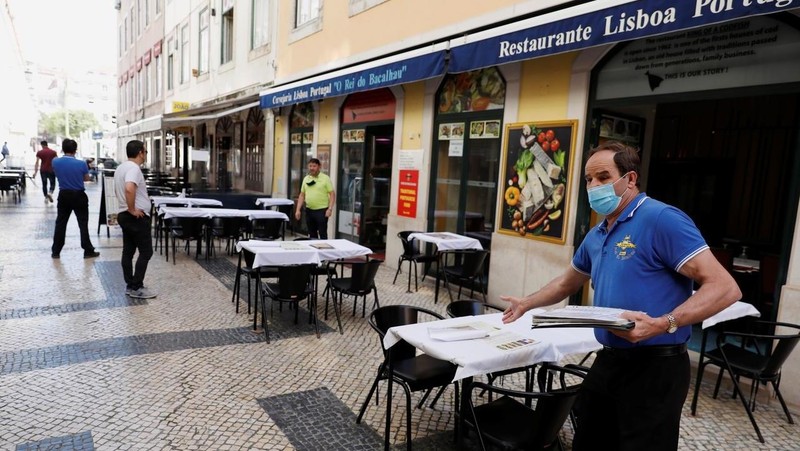Contributing to about 10% of global GDP and providing 10% of jobs in the world, tourism is considered not only as one of the most affected sectors, but also an industry that will take a long time to recover after the COVID-19 pandemic. According to the United Nations World Tourism Organisation (UNWTO), restrictions on travel and the closure of airports and national borders have pushed the international tourism industry deep into its worst crisis for the past 70 years.
The UNWTO predicts that the number of international tourists may decrease from 60% to 80% this year. The number of arrivals fell by 22% in the first three months of this year and by 57% in March alone, with the sharpest declines in Asia and Europe.
Enterprises dependent on the tourism industry are also struggling to maintain operations. The National Statistics Institute of Spain said that no visitors came into the country in April due to the lockdown. The revenue of Spain’s tourism industry, the world’s second most popular tourist destination after France, decreased by 50% in the first four months of this year compared to the same period in 2019.
In the Republic of Korea, revenue of leading travel companies in the second quarter is forecast to drop sharply by 74.1% over the same period in 2019. Meanwhile, more than 149 countries have imposed a ban on entry for people from the RoK, making the number of RoK tourists travelling abroad in April decrease by more than 98.6%, while international visitors to the RoK decreased by 98.2% over the same period last year.
Many famous tourist sites around the world have reopened, but many places are still empty of tourists. As summer approaches in the northern hemisphere, where economies are heavily dependent on tourism, many travel agencies are still concerned by the lack of guests during peak season.
Many businesses and countries have encouraged people to travel again with necessary cautions. TUI, the world’s largest travel company based in Hanover (Germany), said it would soon reopen part of its 400 hotels and resorts. Many activities to stimulate tourism are being boosted.
Austria and Germany decided to reopen three common border gates. The European Commission (EC) proposed that countries with the same severity of the epidemic within the European Union (EU) should be open to each other, to gradually move towards restoring freedom of movement in all 27 member countries. Some Baltic countries have allowed people to travel in the group. Australia and New Zealand have also allowed people to travel between the two countries.
The EU has been planning a gradual restoration of tourism this summer, with the hope of“rescuing” millions of endangered jobs. The German government is planning to lift travel warnings for 31 European countries from June 15 to revitalise tourism. The country plans to resume tourism with 26 other EU member states and the UK as well as four non-EU countries in the Schengen visa-free area.
The Government of Canada also plans to promote domestic tourism. With CAD30 million (US$21.9 million) originally planned to attract international visitors, Canada will use this money to support provinces, states and territories as they encourage people to travel and explore domestic tourist attractions.
In Japan, the government also seeks to restore tourism, an important driving force of the economy, by subsidising people to go on vacation. Approximately JPY1.35 trillion in emergency assistance package worth over JPY200 trillion from the Japanese Government will be allocated to the “Go Travel” initiative. Accordingly, the government will provide up to JPY20,000 (US$185) a day for travellers.
The devastating impact of the COVID-19 pandemic has caused severe damage to the world tourism industry. The recovery of this industry depends on how sooninternational borders are reopened.
Under the most optimistic scenario, if travel restrictions start to be eased from the beginning of July, the number of international tourists may drop by only 58%. If trans-national travel is to resume from early September, the decline in international travel could result in a loss of US$910 billion to US$$1.2 trillion in tourism revenue and a loss of 100 to 120 million direct jobs in this field.
Many countries are currently trying to find ways to rejuvenate tourism after the COVID-19 period, but the future of the “smokeless industry” is forecast to continue to be gloomy at least until the end of this year.
















